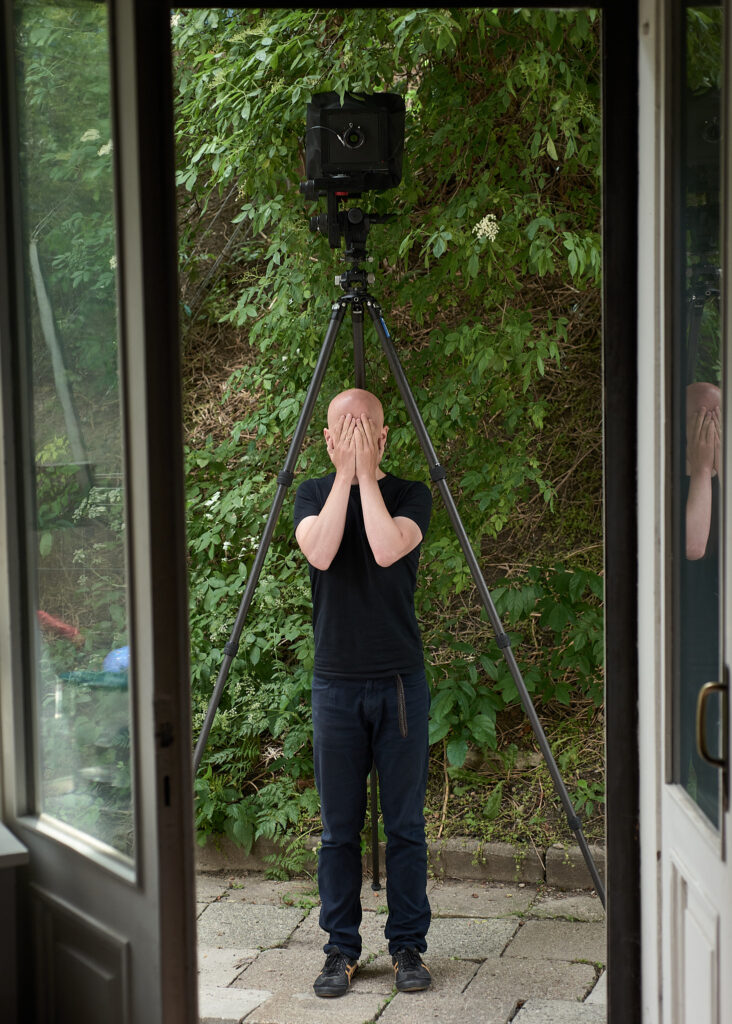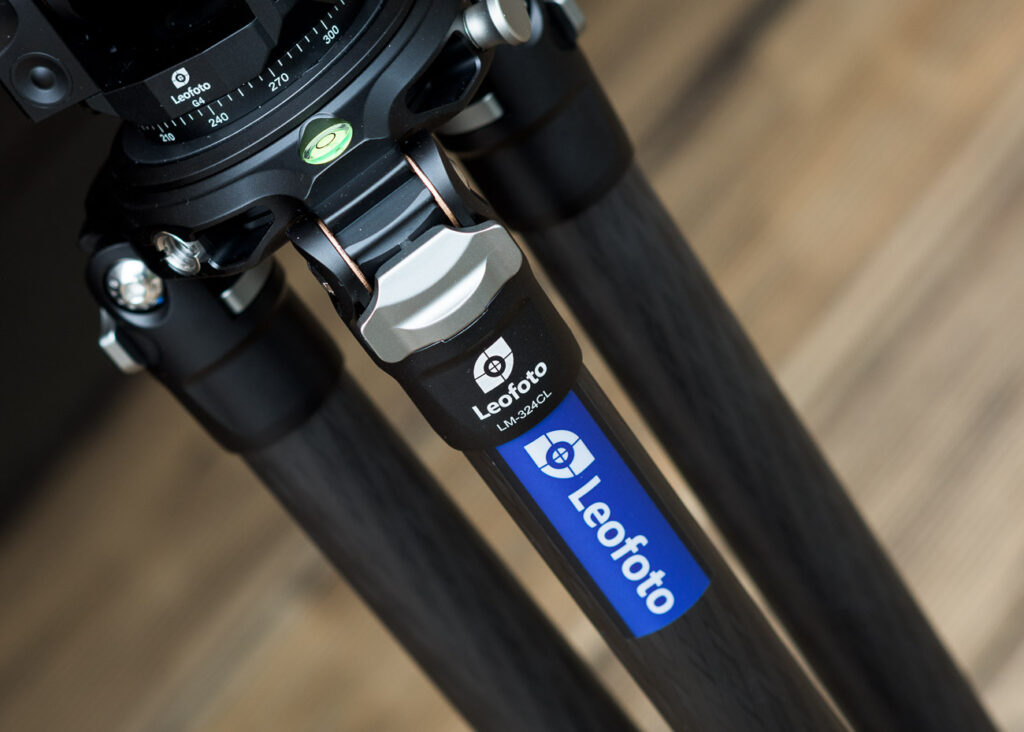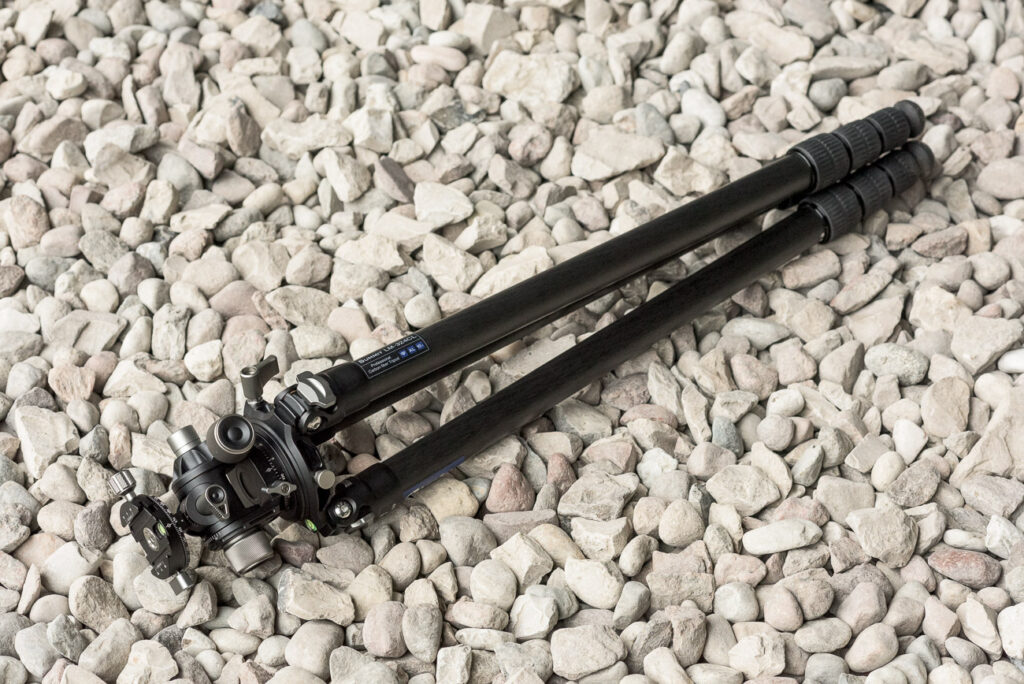Putting the Leofoto LM-324CL Tripod Through Its Paces
A tripod can serve as support for both the camera and the photographer who is exhausted after a long photo session. It can also be a declaration of the photographer’s presence, expressing their intention to capture their subject. During documentary projects, I have consciously used a large format analog camera placed on a tripod, which drew the attention of passersby and became a pretext for conversation, facilitating the establishment of contact with people I wanted to photograph, for example, to take their portraits. When photographing from a tripod, we become visible to our surroundings, we cannot quickly hide our camera or take photos in secret. It also makes it more difficult to escape…

It is obvious that a tripod is a crucial element of a photographer’s equipment for architectural photography. For years, I have used various carbon models from Gitzo, combined with Arca Swiss, Really Right Stuff, and Sunwayfoto heads and accessories. Unfortunately, the last two brands are not easily accessible in Europe. Therefore, I was very curious to see how the products of the new Chinese brand Leofoto would compare to them. I opted for their highest model, the LM-324CL, due to its maximum height of two meters (79.5″) without the central column and relatively low weight (4.01 lb / 1.82 kg).
Leofoto pays attention to details, and this translates into a subjective experience of using their products. The LM-324CL is aesthetically pleasing, well-packaged, and comes with useful additional accessories. From the very first moment, we feel that we are dealing with a high-quality product. It is a piece of equipment aimed at demanding users.

LM-324CL is a 4-section tripod (the third digit in the name indicates the number of sections) from the Summit series (indicated by “LM” at the beginning of the name) in the Extra Long version (indicated by “L” at the end) made of carbon fiber (indicated by “C”) dedicated to heavy camera work. It is sold without a central column (which can be purchased separately). The manufacturer boasts that the legs are made of 10-layer cross-woven carbon fiber from the Japanese company Toray. The diameter of the thickest section is 32 mm / 1.26″ (the first 2 digits in the model name indicate the leg diameter), the second is 28 mm, the third is 25 mm, and the fourth is 22 mm (0.9″). The stiffness-to-weight ratio is very good. The legs weigh only 1.82 kg (4.01 lb), and the manufacturer’s declared maximum load capacity is 25 kg (55.1 lb). The maximum height of the tripod without a central column is up to 202 cm (79.5″). Thanks to the three adjustable leg angles (23, 55, 85°), the tripod can be practically spread out flat to a minimum height of about 10 cm (4″). The folded length of LM-324CL for transport is 678 mm (26.7″).

The upper part of the tripod is made of high-quality CNC-machined and anodized aluminum. The spider is heavily “trimmed” thanks to numerous holes reducing its weight. In the LM-324CL, we will find a systemic mounting of the base plate, similar to the one used in the competitive Systematic Gitzo series. The flat base with a diameter of 80 mm, on which the head is installed, is removable and can be replaced with a 75mm video bowl included in the set or a central column sold separately (DC-324C). Another good option may be to purchase a second plate if we want to be able to quickly change the head.

The installation of the base plate is done by loosening the screw and releasing the retractable lock. The solution used is slightly different from what I knew from the newer Leofoto Mr. Q series, and in my opinion, it is less convenient. In the newer models, after unscrewing the screw with a handy handle that loosens the base plate, we hold down a button that allows us to remove the plate. The handle of the screw can be set in any position after being pulled out. In the Summit series, we will also find a similar screw that loosens the plate, but the handle of the screw itself is loosely fixed, which allows it to be set in any position, and only by pressing it allows the screw to rotate. So, a solution similar to what Gitzo uses was applied, which in my opinion is less intuitive and less convenient. At first, I even thought that the tripod was damaged because the screw was permanently loose. Only after a while, I understood the principle of operation and got used to it. Instead of the button known from Mr.Q, we find a retractable lock here. So, it was designed the other way around, as well. We don’t push, we pull. Both solutions are much more convenient and give the impression of being better made than in competing Gitzo models, where the handle of the screw is plastic, and it cannot be rotated 360 degrees in one motion, making it difficult to tighten.

It is worth noting that the ability to loosen the base plate with the head can be useful not only when replacing this element, for example, with a central column, but we can also use it safely and reliably in some situations as an alternative to the panning, downward movement of the head.

Next to the base plate, we will find a convenient and useful spirit level. Often when setting up a tripod, the most convenient and safest way is to initially level it using the length of the legs and their spread angle, and only then precisely adjust the camera using the head or the video base. The long legs of the described model will be very helpful in more difficult situations. On steep slopes, high stairs, and generally uneven terrain, legs longer than the expected working height of the tripod are very useful. Let’s imagine that we want to place the camera at a height of, 150 cm, but we have to place one of the legs below us on a mountain slope due to the terrain’s shape. With a tripod with a maximum height of 150 cm, we will have to significantly lower our position. In the case of LM-324CL, we can extend two legs to 150 cm and lengthen the third one to level the tripod.
A two-meter tripod will also come in handy when we simply want to photograph from a higher perspective. When photographing architecture, for example, we can place the camera above a parked car or a low fence, blocking the view. During interior photo sessions, a tall tripod combined with a tilt-shift lens allows us to show more planes in perspective, as we can lift the camera above furniture located in the foreground and show more background.
As I mentioned, the leg angle of the tripod can be set in three positions: 23, 55, 85 degrees. This allows for a total spread of the legs to a minimum height of 102mm (4″). The leg angle locking mechanism is very convenient and can be operated even while wearing gloves, thanks to the metal, wide handles that protrude on the sides and snap into place when the tripod is folded. It is worth noting that 23 degrees is 2 degrees less than the leg angle spread in the Leofoto Mountain series tripods or some Gitzo models, for example.

To extend the next leg section, you need to twist the rotary lock. The system works with a distinct click, so setting up a tripod is quick and intuitive. The lock is similar to those used in older Gitzo models, meaning it is made from a single material. I have heard opinions that the solution used in Leofoto tripods is more durable than what we can find in current Gitzo Systematic models. After a short period of use, I cannot evaluate this, but the locks work very confidently and intuitively. By completely unscrewing the lock, we can easily extend the entire leg section, which may be useful for cleaning and maintaining the tripod. Leofoto recently introduced tripods with lever leg locks to their offer (e.g. Rapid Summit Series LMR-364C).

The legs are topped with cup-shaped rubber feet. They can be replaced with metal spikes included in the set, which should work well on ice. You can also purchase several other types of feet. It is worth noting an important detail, which is a rubber seal placed on the screw, protecting the inside of the tripod from water and dust.

The LM-324CL base plate is equipped with a hook that allows you to hang a bag or other weight, making the tripod more stable and keeping lenses or accessories within reach. However, I have some reservations about the size of the hook itself. It could be longer, which would make it easier to hang a bag with a thick strap. I solved this problem by using a climbing carabiner with a piece of duct tape. This allows you to quickly, conveniently, and safely attach the bag with equipment.

On the side wall of the spider, right next to the base plate and bubble level, there is a 3/8 inch thread to which additional accessories can be attached. I also liked this solution in the Mr.Q series tripod, which has two available threads. We can easily attach a magic arm, for example, in a safer and more secure way than by clamping it with the tripod leg grip.
The described model allows for achieving a high height, but of course, we don’t always need to use all the leg sections. During a typical architectural session, I usually take photos from eye level. Therefore, I was very curious about the heights that can be achieved by extending individual leg sections (unfortunately, tripod manufacturers usually do not provide this information in their descriptions). The tripod at full extension is 202 cm high (79.5″), using three sections we will get a height of 152.5 cm (60″). A lot depends on our height and the type of camera we want to mount, but 1.5 m can easily be a good standard working height. I am not that tall of a person, I often work with cameras without a flipping screen, so I would prefer to set the tripod at a lower height. Therefore, I leveled the tripod on a flat surface and marked with a pencil the leg position that suits me when partially extending the third section. This greatly improves quick and even tripod setup. Using two sections, we will get a height of 106 cm (41.7″). I think that this tripod configuration, combined with an additional central column (dedicated model DC-324C), can work in many situations and guarantees very fast leg setup and easy height adjustment during photography.
The weight of the described tripod was a positive surprise for me, especially considering its height and stiffness. One of the factors that contribute to its lower weight is the lack of a central column. A lightweight tripod is not only convenient for transportation but also for setting up, especially when we want to raise the mounted camera to the last section of the legs. We can easily lift the fully extended tripod by holding onto just one leg.
The kit comes with a high-quality, aesthetically pleasing case made of water-resistant material. It is well-fitted in size for the tripod and shaped to take up minimal space. It can perfectly fit a set with the Leofoto G4 head, for example. The included shoulder strap works well due to its reinforcement and widening in the appropriate area. There is a separate compartment for safely packing small accessories. Purchasing such a case separately can be a significant expense, and it is worth noting that the competition does not include it with their tripods. Additionally, the kit includes a video base (a leveling ball needs to be purchased separately), screw-in metal spikes, and a set of adjustment keys in nice form.

I believe that the described model is an optimal choice for someone who takes a lot of photos using a tripod and is looking for a universal model that will work in every situation and with practically any camera. The Leofoto LM-324CL combines relatively low weight with high stability and height. It allows for mounting heavy cameras and lenses, but at the same time, it is not as heavy as, for example, Leofoto models from the Mountain series. I think that I rarely use a height of 2 meters, but for me, it is handy enough that – thanks to its weight and ease of use – it can become my main tripod. The Leofoto LM-324CL allows us to have an additional section, which will facilitate setting up the tripod in difficult terrain or allow us to photograph from a higher point of view.

In my opinion, the locking system for the interchangeable center plate in the described model could be improved. I definitely prefer the one used in the MQ.Q series models. Another thing that I would gladly transfer from the newer model is the two sockets for mounting accessories instead of one.

Buying a tripod is often a long-term investment, as we replace it less frequently than, for example, a camera. After a few months of using the Leofoto tripod, it makes a very good impression on me. I think it is a product worth recommending. An important issue that cannot be checked in such a short time is durability. I expect a tripod of this class to work just as well after several years of use as it did when purchased. Comparable Gitzo models are more massive and therefore give the impression of being more durable. This, of course, translates into their higher weight and, combined with their higher price, makes me lean towards choosing Leofoto products.
